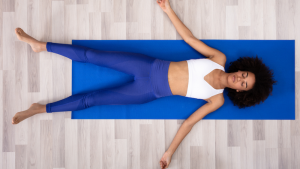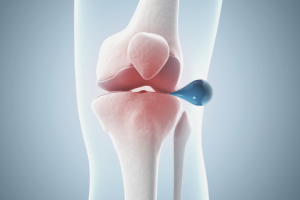Do your shoulders creak? Knees pop? Does your neck make cracking sounds? Do you hear clicking noises in your ankles, wrists or hips when you move? Some of the joints in our bodies can result in an impressive range of weird, wonderful and occasionally extremely loud sounds?
The question I hear frequently as an osteopath and pilates teacher is, what do these joint noises mean? Is it a sign of wear and tear, arthritis or another other debilitating condition. Or just another sign of the kisses of time and advancing years? Should you seek advice about those strange snaps, pops or crunches, or are noisy joint best ignored?
Here’s the inside scoop.
Joints can produce a variety of sounds: popping, cracking, grinding, and snapping for several different reasons. The medical term for these noises is crepitus, while virtually all of these sounds are probably innocuous, crepitus can be a sign of damaged cartilage or inflammation.
Is crepitus in joints dangerous?
Well, it depends! Sorry I know that’s the standard osteopathic (& pilates) answer. If there are no other symptoms, you can probably stop worrying about a noisy joint. However, if you experience discomfort or pain, do consult your GP or a healthcare professional such as osteopath or physiotherapist.

Reasons for crepitus include:-
- Escaping gases
- Muscle tightness
- Rubbing tendon
- Roughened joint surfaces
Escaping gases
Synovial fluid present in the joint contains the gases oxygen, nitrogen, and carbon dioxide. When the joint moves the joint capsule (blue areas in fig above) is stretched resulting in a rapid release of these gases, the crack or pop. The gases need to return to the synovial fluid to release another noise in the same joint again. These are medically called “benign pops or high-pitched snaps” and are common usually pain-free and harmless. Also thought to be the source of the sound produced when people “crack” their knuckles, but it isn’t necessary to crack your knuckles to create these sounds. Any movement that causes a sudden change in joint volume will cause this. Though, its more likely to happen with fast weight bearing movements, for example, ankle joints are more prone to making popping or snapping noises when running than walking.
Muscle tightness
Particularly in the neck can also cause these crepitus sounds. As we begin turning our neck, there may be resistance (stiffness or strain) which can cause a builds up of pressure in the joint, when the joint eventually moves this can create similar sounds to ankles or knees but can sound much louder as its closer to our ears.
Tendons rubbing
Can also cause crepitus, as joint moves the tendons position changes and can moves slightly out of its optimal position (poor alignment) resulting in a snapping sound as the tendon returns to its original position, it flicks over the joint like an elastic band. Also, ligaments may tighten as we move joints, this commonly occurs in the knee or ankle and can result in a cracking sound, which is more likely to happen when the tendon has become “inflamed” due repetitive movement, so you will probably notice discomfort or pain before the noise in these circumstances. The sheath of the tendon (it’s like the wrapping around the flex of a kettle) becomes irritated owing to it not gliding smoothly in the sheath and can swell resulting in a real grinding noise; this is usually painful.
Roughened joint surfaces
Occur as the protective articular cartilage that covers the ends of bones in joints gradually wears away. The once smooth glass-like surface that allowed the bones move smoothly and easily against each other is now a frayed, rough surface.
What can you do about osteoarthritis
Unfortunately, there’s little you can do to prevent this condition developing, as osteoarthritis is primarily controlled by our genes. Nevertheless, there may be steps you can take to slow the process down and limit cartilage deterioration, joint instability and muscles imbalance

- Keep as active as possible, due to cartilage having an inadequate blood supply and relies on movement to“pump” blood and nutrients in and around the joint
- It would be sensible to minimise high-impact repetitive activities which can aggravate symptoms and possibly speeds up the deterioration of cartilage.
- Painful crepitus may be eased by physical
- therapy ( osteopathy, physiotherapy and clinical pilates) to correct muscle weaknesses, improve range-of-motion and joint alignment.
- Studies demonstrate regular exercise can decrease stiffness and strengthen the muscles that support joints
- Keep your weight under control; research shows that losing just a few pounds can result in an enormous difference to the amount of stress placed on some joint especially the knees.
- Eat food rich in essential fats as they contain anti-inflammatory and lubricating benefits. An omega-3 fats rich diet may help delay or slow down the progression of osteoarthritis, and beneficial changes have been detected in both cartilage and bone beneath cartilage.
Can Pilates help?
Applying Pilates principles to your daily life, with its focus on precise movement and joint alignment, which refers to how the head, shoulders, spine, hips, knees and ankles relate and line up with each other. Pilates alignment and movement control which has been demonstrated in several studies to reduce the stress on affected joints.
When to seek help
Severely painful crepitus should be investigated by a health professional. In rare cases, it can be caused by a fracture; the two broken fragments of bone rubbing together will result in noise.
Should I ask for a Xray or MRI scan?
Confusingly, the degree of cartilage degeneration may not correlate closely with the amount of pain you feel, while someone with severe signs on imaging report few symptoms and vice versa. Seemingly this depends on how pain signals are amplified or dampened down in the brain, doctors and scientists are not sure what influences that, more research is needed.
Experiencing pain or are worried
Speak to your GP or pharmacist about over-the-counter anti-inflammatory tablets or topical gels which may be helpful. Cold packs can also help reduce inflammation and speed healing. Reduce aggravating activities rather than complete rest is the best current advice.
Some forms of painful crepitus can be improved by physical therapy (osteopathy, physiotherapy clinical pilates or chiropractic) which will aim to improve joint alignment and correct muscle imbalance or weaknesses which affect the stability of joints.
Trivia! Which joint produces the loudest sound?
The Achilles tendon rupturing is the loudest sound any human joint is likely to make. It can crack like gunfire as a result of the enormous tension the tendon is under when it snaps, this is usually extremely painful.
Final thoughts
Noisy painful joints are more likely to be an indication of a problem, especially for children and young adults. If in doubt its worth a visit to a healthcare professional of your choice for assessment and treatment For the rest of us, if you hear a bit of crepitus (popping or cracking), it is more likely to be another sign of the kisses of time.
PS – are you a knuckle cracker?

If you or a loved one is a habitual knuckle cracker, there is disagreement around whether this is harmful. Some studies show that there is no relationship between knuckle cracking and damaging joints. However, others demonstrate that repetitive knuckle cracking can be detrimental to the soft tissue of the joint, which may lead to a weakness in hand affecting fine motor control like doing up buttons and result in swelling of the hand or fingers. There is no evidence that cracking knuckle causes arthritic changes, but it’s a not an attractive habit.
Please note: This is for guidance only, it should not be regarded as a substitute for medical advice, diagnosis or treatment given in person by an appropriately trained health professional.







